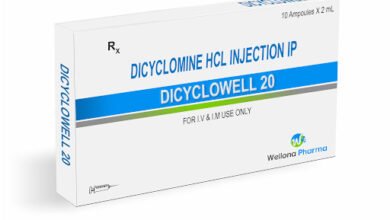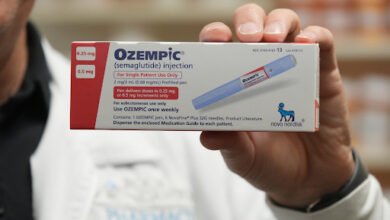Melanoma Eyelid: Causes, Symptoms, Diagnosis, and Treatments

Melanoma is a form of skin cancer that can be life-threatening. Although it usually develops on the skin, it can also occur in other body parts, such as the eye. Eyelid melanoma, or ocular melanoma, affects the cells that produce pigmentation and determine the color of an individual’s eye.
So, what should you look out for to check for melanoma? Well, if you notice a new spot, bump, or mole on your eyelid that looks different or starts changing in size, color, or shape, it’s time to pay attention. Sometimes, it might itch or bleed, too. These are signs that you should talk to a doctor about it. This blog will discuss how melanoma on the eyelid is diagnosed and treated and what you can do to protect your skin.
Understanding Malignant Melanoma Eyelid
Eyelid melanoma is a subset of eye cancer. It predominantly affects the uvea, the layer between the retina and the white part of the eye. It can be of two types – primary eye cancer and secondary eye cancer. Primary eye cancer occurs within the eye, whereas secondary eye cancer begins in another part of the body and spreads to the eye. About 9 out of 10 cases of eye melanoma are secondary, with the primary tumor typically originating in the skin.
Eyelid Melanoma Symptoms
While some may remain asymptomatic, the ones with early-stage eye melanoma symptoms may include:
1. A Dark Spot in the Iris: An early sign of eyelid melanoma is the appearance of a dark spot in the iris. This spot may grow over time.
2. Displacement of the Eye within Its Socket: In some cases, the affected eye may shift from its normal position within the eye socket.
3. Flashing Lights in the Visual Field: Patients with eyelid melanoma may experience flashing lights or visual disturbances.
4. Watery Eyes: Excessive tearing or watery eyes can be a symptom.
5. Blurry Vision: You may also experience Blurry or distorted vision in the case of Melanoma on Eyelid.
6. Loss of Peripheral Vision in One Eye: It’s possible for a person to gradually lose their peripheral vision in one eye due to melanoma.
7. Floaters: Some people with eyelid melanoma might notice “floaters” in their field of vision. Floaters are like specks, squiggles, dots, lines, clouds, or cobwebs that seem to float around in your vision. They can be a bit annoying, but the important thing to remember is that having floaters doesn’t always mean you have cancer.
8. Pain in or Around the Eye: Pain in or around the eye can sometimes be a symptom of eyelid melanoma.
Also Read: Best Eye Vitamins For Blurry Vision
Eyelid Melanoma Causes
These risk factors include:
-
Eye Color: People with a modification of blue or green pupils have a higher chance of getting ocular melanoma than those with brown eyes. Ocular melanoma is a serious disease that can lead to vision loss or even death.
-
Exposure to Ultraviolet (UV) Light: Prolonged exposure to UV light is linked to an increased risk of conjunctival melanoma.
-
Dysplastic Nevus Syndrome: Sometimes, people with this condition grow strange-looking moles called ‘dysplastic nevi. These moles don’t have smooth edges, and they’re bunched up close to each other. These strange moles have a higher chance of turning into a kind of skin cancer called ‘malignant melanoma’ when compared to normal moles.
-
Ethnicity: Eye melanoma is most common in individuals of white ethnicity.
-
Age: While eye melanoma can develop at any age, it becomes more likely as people age.
Diagnosis of Eyelid Melanoma
Ophthalmologists or optometrists must conduct regular eye examinations for early detection. They have the expertise to Examine the eye thoroughly for abnormalities, including tumors.
The diagnostic process typically involves the following steps:
1. External Eye Examination: The outer part of the eye is inspected for enlarged blood vessels or any visible abnormalities that can reveal the presence of any eye conditions.
2. Internal Eye Examination: An ophthalmoscope is used for an inner eye examination. This tool helps to examine the retina, optic nerve, lens, and other structures within the eye.
3. Pupil Dilation: Sometimes, eye drops dilate the patient’s pupils. This process enlarges the openings for a thorough examination.
4. Ophthalmoscopy: This is generally effective in detecting most cases of eye melanoma. If an ocular melanoma is suspected, additional imaging tests are recommended to confirm the diagnosis. These tests may include:
5. Ultrasound: High-frequency sound waves create images of the structures inside the eye. Eye melanomas often exhibit distinctive features on ultrasound images, which can help in the determination of the thickness of the tumor.
6. Fluorescein Angiography: A camera is used to capture images as a yellow dye circulates through the blood vessels in the eyes. This procedure highlights the flow of the dye and can provide information about the blood vessels in the retina.
If melanoma is confirmed, the patient is referred to an oncologist to devise a treatment plan. In addition, further tests may be necessary to determine the severity of the disease and whether it has spread to other areas of the body. These tests could include blood tests, chest X-rays, CT scans, MRIs, or biopsies.
Also Read: Vuity Eye Drops – Uses, Benefits, Side Effects, and More
Eyelid Melanoma Treatment Options
Are you worried about “can eye melanoma be cured?”. The treatment for eyelid melanoma depends on several factors. Some of the treatment options may include:
I. Surgery
The selected procedure depends on the tumor’s characteristics.
I.1. Iridectomy: This procedure involves the removal of small melanomas located in the iris that have not metastasized to other areas of the eye.
I.2. Iridotrabeculectomy: In this surgery, parts of the iris and supporting tissues that may be affected are removed.
I.3. Iridocyclectomy: This procedure involves removing a section of the iris and ciliary body. The ciliary body is a thin layer containing blood vessels located between the white part of the eye and the retina.
I.4. Thyroidectomy: In this surgery, a Doctor takes out a piece of the choroid (a part of the eye) and sometimes a part of the eyewall that has blood vessels. Sometimes, they might use radiation therapy after the surgery to help make sure the problem doesn’t come back.
I.5. Enucleation: When a big tumor is there, and if other treatments might make you lose a lot of your eyesight, the doctor might suggest something called “enucleation.” That’s when they take out the whole eye. After that, they can put in an artificial eye to make it look normal, even though it won’t seem like a real eye. This is often done to help with how your eye looks.
II. Radiation Therapy
Radiation therapy uses targeted radiation to destroy cancer cells. The radiation is carefully directed to minimize damage to healthy cells. Two types of radiation treatment are used for ocular melanoma:
II.1. Teletherapy: This external radiation method targets malignant cells in the eye.
II.2. Brachytherapy: In brachytherapy, small radioactive seeds are temporarily placed in the eye to shrink the tumor. A plaque containing several iodine-125 seeds may be attached to the eye’s wall near the tumor, emitting radiation for a few days.
Also Read: Do you have the Pink eye?
III. Other Targeted Treatments:
III.1. Transpupillary Thermotherapy: This involves using infrared laser therapy to administer heat and shrink smaller tumors.
III.2. Cryotherapy: Cancerous cells can be killed by freezing them using liquid nitrogen.
It must be noted that the treatment choice should be determined with consultation.
Prevention of Eyelid Melanoma
There are steps to reduce the risk of developing the condition. These main measures include:
- You should wear sunglasses that protect your eyes from UVA and UVB rays.
- Put on sunscreen, and use a hat to shield your face and eyes.
- Use a hat before going out. The big hat basically protects your face and eyes from the sun. It reflects back all the UV rays.
- Avoid going the places where snow and sand are more. As it reflects back the sunlight.
- If you skiing or hiking, then be aware of high altitudes.
- Eye Exercise is important to do every day.
- Eat the right food and avoid processed food, and meats.
- Rinse your eyes carefully.
Also Read: Eye protection and Sunglasses – All you need to know
Outlook for Eyelid Melanoma
Doctors check how well someone might do with cancer by looking at the five-year relative survival rate. This means they compare how likely a person with cancer is to live for five years after they find out they have it compared to someone who doesn’t have cancer.
-
If melanoma is only in the eye and hasn’t spread anywhere, the survival rate is about 85%. That’s a good chance of getting better.
-
But, if the cancer has spread to other parts of the body, the survival rate goes down a lot to around 19%. So, it’s better to catch it early and keep it from spreading.
Conclusion
Eyelid melanoma is a special kind of cancer that affects the eyes. Finding it early and getting treatment is really important for a better chance of getting well. It’s a good idea for people to know what things might raise their risk of getting it, get their eyes checked regularly, and be careful about too much sun.
It is essential for you to know what things raise the risk of getting it, check your eyes regularly, and be careful about too much sun. With all the progress in medicine and if we act quickly to care for our eyes, people with eyelid melanoma can get better treatment and have a good chance of getting better.
Source link
#Melanoma #Eyelid #Symptoms #Diagnosis #Treatments



